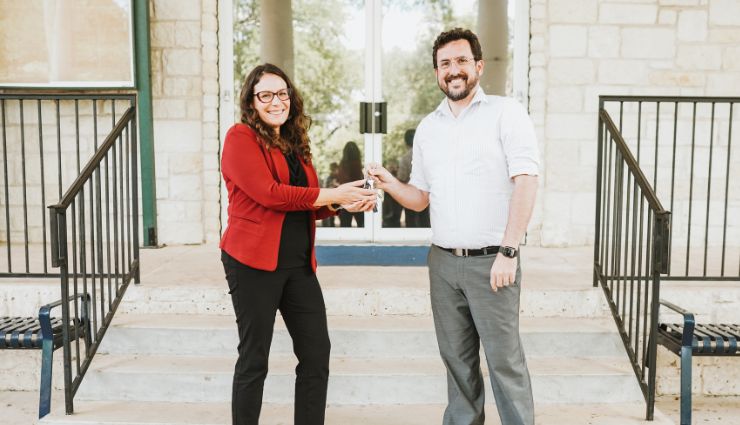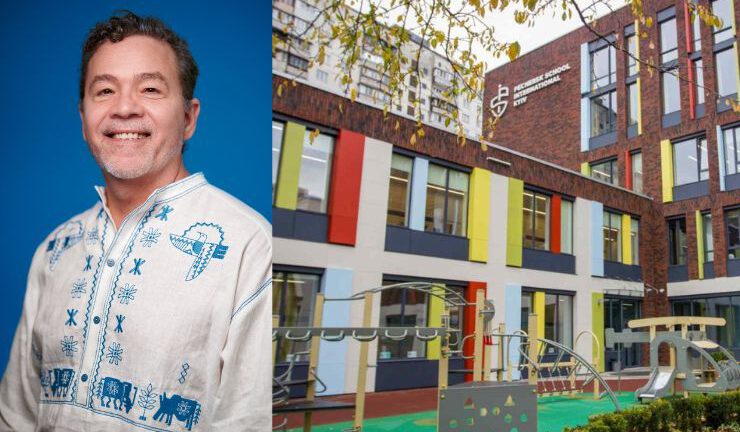“I Interviewed Completely Virtually. Here’s What I Learned.”

We talked to Carney Sandoe candidate Tami Sanders about her recent experience with a virtual hiring process. Tami has been working at Hong Kong International School since 2017 and recently, because of concerns around COVID-19, went through a virtual hiring process while she searched for her next position.
Not all schools will follow the same approach to hiring virtually, but hopefully Tami’s experience offers some perspective for job seekers about to go through the same thing.
Describe the components of the hiring process you went through.
Step 1: The first Skype video call was generally short and generic (30 minutes). It felt very similar to what you might read about on the internet about interviewing (i.e. “Tell us a little bit about why you think you might be a good candidate for our school.”). By the end of this first call, I generally got a good feel if there would be a follow-up call. Usually schools let me know what their process and timeline were like for the position.
Step 2: If I progressed to the next round, I met with the hiring committee via Skype video. This conversation lasted around 1 to 1.5 hours and was more intense than the first call. Here, there were usually 4-8 members of the hiring committee asking very different kinds of questions. For example, if the interviewer was a classroom teacher, they asked questions about how this position would affect their job. If they were on the Learning Support team, their questions would focus around student support and collaboration. It’s important to keep in mind that these are key members of the community who have a strong say in if you will move onto the next round. Job seekers should feel comfortable asking in advance who the members of the hiring committee are so you can do your research and be prepared for the conversation.
Step 3: This looked different for different schools. At one school, this step was a Skype video call with the Head of School. This call lasted about 30-45 minutes and was an in-depth interview. However, at another school, a call with the Head did not take place until during the virtual visit.
Step 4: At this point, schools began inviting me for a virtual visit. Depending on the school and time zone difference, this happened in two formats for me. At one school, it was a true virtual visit that started before the school day and ran through until after their school day – 100% on virtually (explained more below); at another school, this was split up into two visits, each spanning four hours. I suggest job seekers ask the person who is building their virtual visit schedule to schedule in a few breaks to use the bathroom, have a snack, etc.
Step 5: The virtual visit. This can happen on different technological platforms. I used both Zoom and Skype, and both were quite effective. The visit started before the school day when the faculty came to a large space to meet with me. I was projected onto a large screen while the faculty asked their questions.
In both the full-day and two-day formats, the schedule was a full-on virtual visit. They walked me around campus with a camera, and was able to visit classrooms and the campus via my screen. I met with many key stakeholders and important groups during the virtual visit, and made sure I used these opportunities to ask questions.
Did you have to present a demo lesson? If so, how did that process work?
I was not applying for a teaching job. However, I do have videos of my teaching on my professional website that I referenced in one interview around instructional coaching. I highly suggest that all teachers have a professional website where they store videos of teaching, their educational philosophy, and additional information around their training. Your website or blog can be used during your interview by sharing your screen and you can walk your interviewees through it. They can then go back and watch your videos more thoroughly on their own later. (Read about some of the ways schools are approaching a virtual demo lesson here!)
How did you ensure you were learning enough about the school and its culture without being able to step foot on campus?
In my follow up emails to each person (throughout the whole process), I would include questions regarding their role and what was important to them. Some people responded, and some waited until they saw me again in the next round. Before my virtual tour, I had a print out of what the schedule would look like, the timing, and who I would be interviewing with. I had prepared questions for each group ahead of time. Remember, your questions say a lot about who you are. Represent yourself well by asking thoughtful questions. I wasn’t able to ask all the groups my questions as they also prepared. However, I was able to for most. (We break down 5 important questions to ask yourself as a job seeker.)
In addition to this, I did some networking to find out first-hand about the school. I asked people that I respected and who were close or familiar with the school questions about it. I ended up connecting with some alumni and also some teachers who came from the international education community.
What did you wish you knew before the process began? What other tips do you have for job seekers?
Practice sharing your screen beforehand if you will be referencing anything during the interview (i.e. videos of yourself teaching, lesson plans, etc). I called my mom and gave the technology a few practice rounds.
Be sure to have your computer charging so that you don’t have to interrupt the process to charge. Have a backup iPad or computer in case of any glitches. Have it up, running, and ready to go. This did happen to me once – my computer video just stopped – and I quickly switched over to my iPad as I had it on and ready right next to me.
It’s harder to make jokes in a virtual environment. I think not being able to show and/or read body language makes humor tricky, so be mindful of that if you have a tendency to use humor often.
My most significant piece of advice is to place yourself in a professional setting. Be aware of what the people on the other side of camera will be seeing; put away anything around and behind you that is distracting and tidy up. If you have a home office or more formal space, that is preferable to doing the interviews from, say, your kitchen or couch. (Read our tips on setting yourself up for success for a virtual interview.)
These examples are meant to give schools and job seekers a frame of reference for virtual hiring. Practices and procedures may vary from school to school.
Have you gone through a virtual hiring process? Share your experience with us in the comments below.








